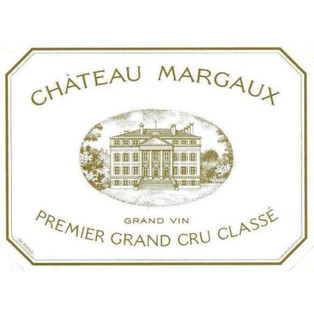Cabernet Sauvignon vs Merlot: Differences and Similarities Explained
- Stephanie
- Dec 18, 2019
- 4 min read
Updated: Jun 8, 2020

What are the differences and similarities between Cabernet Sauvignon vs Merlot? These two types of wine are so similar that many times experts get tripped up when blind tasting the two side-by-side. But even though they have many similarities, it’s their differences that make them perfect blending partners.
Typical Characteristics of Cabernet Sauvignon vs Merlot
Cabernet Sauvignon Characteristics
Cabernet Sauvignon is also referred to as Cabernet or Cab. This red grape varietal creates a deep red wine color. It’s known for its very strong tannins (that drying sensation and bitter taste). It’s a dry wine with high acidity (fresh, tart taste), and full-body (heavy feeling that coats the mouth).
Cabernet is known for black fruit flavors such as blackberry, black cherry, and black currant, as well as, green pepper flavors. All of this means it has a deep, rich, full-flavor along with dryness and bite.
Merlot Characteristics
Merlot is a red grape varietal that creates a slightly lighter red wine color than Cab. Its tannins are much softer than that of Cab while having a strong fruit flavor.
Merlot has medium tannins, medium acidity, dry, and medium- to full-body. Depending on the climate where Merlot grapes are grown, you’ll get slightly different fruit notes. Cool climate Merlot exhibits red fruit notes such as strawberry and raspberry, while warm climate has black fruit notes of blackberry and black cherry.
For Merlot, this means the wine has that deep, rich, full-flavor, but with a softer silkiness to it.
Which is sweeter Merlot or Cabernet Sauvignon
These are both dry red wines. This means there is no residual sugar left in the wine after fermentation. However, our taste buds can translate fruitiness in wine as sweet and they translate tannins as dry. Since Merlot has more fruitiness and less tannin, it can be perceived with a hint of sweetness (but not to be confused with sugary sweetness). Cabernet Sauvignon has strong tannin and less fruitiness which translates on our taste buds to bone dry.
Blending Merlot and Cabernet Sauvignon
When these two great wines are blended they bring out the best in each other. Many times the tannin in Cabernet Sauvignon can be too strong and biting. This is where Merlot comes in. It tames the tannins and adds a bit of softness to the wine.
On the other side, Merlot can lack a bit of acidity or that fresh quality that gives a wine some liveliness. Cabernet provides that stronger acidity which adds freshness and more structure to the wine. As you can see, what one lacks the other provides.
Blends from the Bordeaux Region
These two red grape varietals originated in Bordeaux, France. A river runs right through the region creating a natural border with the right bank of the river producing Merlot grapes and the left bank producing Cabernet Sauvignon grapes.

Merlot is grown on the right bank in clay soil while experiencing a slightly cooler micro-climate than that of the left bank. The wineries in this region produce red blends of 70-80% Merlot, 20-30% Cabernet Sauvignon, a bit of Cabernet Franc, sometimes Petit Verdot, and possibly a few others.
Cabernet Sauvignon is grown on the left bank in gravelly soil and loves the warmer micro-climate. These wineries produce red blends of 70-80% Cabernet Sauvignon, 20-30% Merlot, along with some other wines such as Cabernet Franc and Petit Verdot.
Think you’ll never remember the difference between right bank and left bank? Try this trick I learned. Hold your left hand up and form an L with your pointer finger and thumb. This means Left Bank. Now change the shape to form a C with that same hand. This means Cabernet Sauvignon. Next time you want to remember, just think Left Bank is Cab predominant. Nice, huh?!
Best Regions for Merlot
Merlot is one of the most planted grape varietals around the world, but these regions have perfected Merlot as a single varietal wine (100% Merlot Wine) and as a blend.
France: Bordeaux (Right Bank Blend) (Major Regions: St Émilion, Pomerol, Fronsac)
California: Napa Valley, Sonoma, Paso Robles
Washington: Columbia Valley, Walla Walla Valley
Best Regions for Cabernet Sauvignon
Just like with Merlot, Cabernet Sauvignon vines can be found around the world, but these regions have perfected the wine as either single varietal or as a blend.
France: Bordeaux (Left Bank Blend) (Major Regions: Médoc and Graves)
California: Napa Valley
Washington: Columbia Valley, Walla Walla Valley
Identifying Blends from the Label
This is where it can get tricky, especially when identifying the blends with American wines and even more so with French and Italian wines.
American Labels
The California and Washington labels for single-varietal wines are straight forward. The labels will include Merlot or Cabernet Sauvignon right on the front of the label so there is no confusion.

American wineries also produce Bordeaux style blends. You can identify them in a few ways. The label will state Left Bank Blend or Right Bank Blend. It could also say Red Wine or Proprietary Red. With these last two, you’ll need to inspect the label or winemakers’ notes further to identify the varietals (types of grapes) used in the blend.
French Labels
When selecting a Bordeaux, you need to look for the appellation (region name) that will be printed right on the front of the label.
Left Bank Bordeaux is produced in the major regions of Médoc and Graves, but look for these sub-region names on the label:
Médoc sub-region names: Haut-Médoc, Listrac-Médoc, Margaux, Moulis-en-Médoc, Pauillac Saint-Estèphe, and Saint-Julien.
Graves sub-region name: Pessac-Léognan
Right Bank Bordeaux is produced in the major regions of St. Émilion, Pomerol, and Fronsac. Just look for those major regions on the wine labels as the sub-regions include these major region names. This makes it slightly easier as there are quite a few sub-regions.
St Émilion sub-region names: Saint-Émilion Grand Cru, Lussac Saint-Émilion, Puisseguin Saint-Émilion, Montagne Saint-Émilion, Saint-Georges Saint-Émilion
Pomerol sub-region name: Lalande de Pomerol
Fronsac sub-region name: Canon Fronsac
Wrap Up: Cabernet Sauvignon vs Merlot
Just remember Cabernet Sauvignon has a strong, bold, rich flavor with a biting edge. Merlot is the softer sibling with less bite and more fruit flavor.
To become more familiar with these types of wine, try them as a single varietal and as a blend. You can find some great options for each of them within these in depth pages: Cabernet Sauvignon and Merlot.













.png)